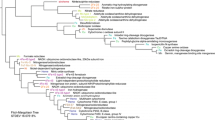Abstract
In their article, “New light on a dark subject: On the use of fluorescence data to deduce redox states of natural organic matter,” Macalady and Walton-Day (2009) subjected natural organic matter (NOM) samples to oxidation, reduction, and photochemical transformation. Fluorescence spectra were obtained on samples, which were diluted “to bring maximum uvvisible absorbance values below 1.0.” The spectra were fit to the Cory and McKnight (2005) parallel factor analysis (PARAFAC) model, and consistent variation in the redox state of quinone-like moieties was not detected. Based on these results they concluded that fitting fluorescence spectra to the Cory and McKnight (2005) PARAFAC model to obtain information about the redox state of quinone-like moieties in NOM is problematic. Recognizing that collection and correction of fluorescence spectra requires consideration of many factors, we investigated the potential for inner-filter effects to obscure the ability of fluorescence spectroscopy to quantify the redox state of quinone-like moieties. We collected fluorescence spectra on Pony Lake and Suwannee River fulvic acid standards that were diluted to cover a range of absorbance wavelengths, and fit these spectra to the Cory and McKnight (2005) PARAFAC model. Our results suggest that, in order for the commonly used inner-filter correction to effectively remove inner-filter effects, samples should be diluted such that the absorbance at 254 nm is less than 0.3 prior to the collection of fluorescence spectra. This finding indicates that inner-filter effects may have obscured changes in the redox signature of fluorescence spectra of the highly absorbing samples studied by Macalady and Walton-Day (2009).


Similar content being viewed by others
References
Cory RM, McKnight DM (2005) Fluorescence spectroscopy reveals ubiquitous presence of oxidized and reduced quinones in dissolved organic matter. Environ Sci Technol 39:8142–8149
Fimmen RL, Cory RM, Chin YP, Trouts TD, McKnight DM (2007) Probing the oxidation–reduction properties of terrestrially and microbially derived dissolved organic matter. Geochim Cosmochim Acta 71:3003–3015
Hood EW, Williams MW, McKnight DM (2005) Sources of dissolved organic matter (DOM) in a Rocky Mountain stream using chemical fractionation and stable isotopes. Biogeochemistry 74:231–255
Macalady DL, Walton-Day K (2009) New light on a dark subject: on the use of fluorescence data to deduce redox states of natural organic matter (NOM). Aquat Sci 71:135–143
McKnight DM, Boyer EW, Westerhoff PK, Doran PT, Kulbe T, Anderson DT (2001) Spectrofluorometric characterization of dissolved organic matter for indication of precursor organic material and aromaticity. Limnol Oceanogr 46:38–48
Miller MP, McKnight DM, Cory RM, Williams MW, Runkel RL (2006) Hyporheic exchange and fulvic acid redox reactions in an alpine stream/wetland ecosystem. Environ Sci Technol 40:5943–5949
Mladenov N, Huntsman-Mapila P, Wolski P, Masarnba WRL, McKnight DM (2008) Dissolved organic matter accumulation, reactivity, and redox state in ground water of a recharge wetland. Wetlands 28:747–759
Mobed JJ, Hemmingsen SL, Autry JL, McGown LB (1996) Fluorescence characterization of IHSS humic substances: total luminescence spectra with absorbance correction. Environ Sci Technol 30:3061–3065
Ohno T (2002) Fluorescence inner-filtering correction for determining the humification index of dissolved organic matter. Environ Sci Technol 36:742–746
Stedmon CA, Markager S (2005) Resolving the variability in dissolved organic matter fluorescence in a temperate estuary and its catchment using PARAFAC analyses. Limnol Oceanogr 50:686–697
Stedmon CA, Markager S, Bro R (2003) Tracing dissolved organic matter in aquatic environments using a new approach to fluorescence spectroscopy. Mar Chem 82:239–254
Tucker SA, Amszi VL, Acree WE (1992) Primary and secondary inner filtering: effect of K2Cr2O7 on fluorescence emission intensities of quinine sulfate. J Chem Educ 69:A8–A12
Yamashita Y, Tanoue E (2008) Production of bio-refractory fluorescent dissolved organic matter in the ocean interior. Nat Geosci 1:579–582
Author information
Authors and Affiliations
Corresponding author
Rights and permissions
About this article
Cite this article
Miller, M.P., Simone, B.E., McKnight, D.M. et al. New light on a dark subject: comment. Aquat. Sci. 72, 269–275 (2010). https://doi.org/10.1007/s00027-010-0130-2
Received:
Accepted:
Published:
Issue Date:
DOI: https://doi.org/10.1007/s00027-010-0130-2




